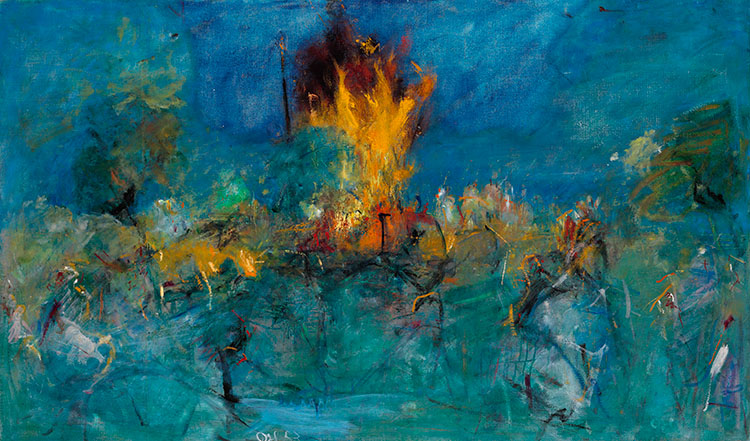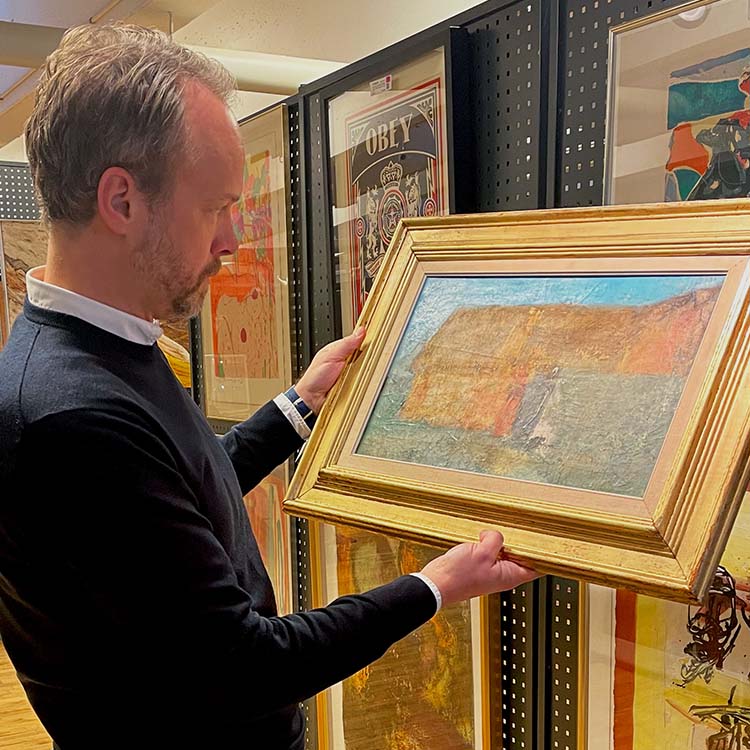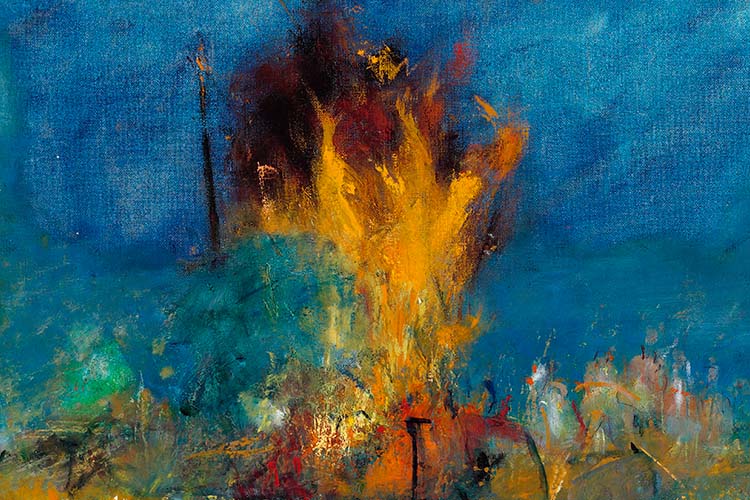
Bognemark Revisited – Oluf Høst
From location to inspiration: in a series of articles, we look at places that have provided inspiration for artists in their work. This time we look closer at an unsightly farm near Gudhjem on Bornholm. Here the artist Oluf Høst found a motif that gave him so many possible variations that he ended producing several hundred depictions of the farmyard at Bognemark.
Only an Artist After Returning to Bornholm
The Bornholm painter Oluf Høst (1884-1966) has depicted many of the Baltic island's landmarks, such as round churches and the herring smokehouses, but he is especially known for the many variations of the farm called Bognemark. It was perhaps only when he returned to Bornholm and discovered this motif that he found his direction as an artist, at least according to himself:
I would never have been successful if I hadn't gone back to Bornholm.
Oluf Høst
Before returning to his native island, Høst had become a seaman in his young teenage years, where he made it to both Russia, China and Japan. After this period, he was educated at both the Academy of Fine Arts in Copenhagen and at the Danish painter Harald Giersing's school of art. Høst also met his wife, Hedwig Wiedemann, via his studies in Copenhagen. They were married in 1913 and lived in the Danish capital for several years, but the boulevards and the growing metropolis were not enough to ignite his inspiration. Bornholm beckoned more, and in the late 1920s, the couple and their children were given the opportunity to settle on the island in a large home with a studio for Høst.
The Battle for Bognemark

|
|
The home chosen for the Høst family was in the village of Gudhjem, which faces Northeast. This meant that it never really got dark in the summer but very dark in the winter. You felt the seasons even more because of this shifting amount of daylight, and the same applies to Høst's paintings, which include the seasons in the choice of colours. Høst was particularly fascinated by a motif found at the farmstead Bognemark, which was located in the countryside above the town of Gudhjem. The farm was originally called Skovly and had an opening towards the horizon and the Baltic Sea, which not only attracted Høst but also other painters with whom he competed for the space. Thanks to his in-laws' good finances, however, Høst was able to become the owner of the farmstead and thereby got the exclusive right to paint on the site. He came up with the name "Bognemark" himself. It may refer to what is known as a "bogne", a Bornholm name for a beacon fire that was supposed to warn of attackers from afar. |
He was able to paint it in his sleep, but still you can see that he is incredibly excited when he has to choose his colours and tools... He painted several hundred paintings of this motif, but no two are alike. He painted it in bright sunshine, in fog, with snow falling silently around him, in stormy weather – there were never two alike.
Lars Kjærulf, retired museum director for Bornholm’s Art Museum.
A Clear ColouristWhile depicting Bognemark in all kinds of wind and weather and throughout the seasons, Høst was also not shy about using many different techniques to achieve the ‘unique’ painting he was working on, such as scraping in the paint, wiping it off with dirty rags, burning it or laying it out in the snow – and the of course also the choice in colour and angles, which could also be used to get out of the box as Høst himself describes it: "The blue, the oblique – that will bring some musicality into the frame."
|

|
|
According to some, Høst's central colour was blue, yet one of his favourite motifs was also the red and orange fire. This applied to both the controlled and life-affirming Midsummer bonfires, the slumbering embers below the herring in the smokehouses and then the more unforeseen and devastating farm fires, which Høst also depicted. It is said that he had made a deal with the telephone exchange on the island to give notice when the fire brigade moved out, so that he could also be present when fires raged locally. |
What’s fascinating about Høst is the incredibly local starting point, which then becomes universal due to his style. It’s the day, light and weather that Høst captures as a seismograph over the volatility of nature and the nuances of the hours of the day. But the motif is at the same time also an alibi for focusing on the painting process itself. It is the doubleness of the depiction of being in nature and the idiom that moves towards the complete abstract. In this way his art lies and oscillates between the motive and the abstract, which makes Høst much more than just a local painter.
Niels Boe-Hauggaard, specialist in modern art at Bruun Rasmussen.
Bognemark's Fate and the Final PaintingsWhen Høst passed away in 1966, the tombstone was made by a stone from Bognemark. The place itself suffered the fate of burning down in 2000. Høst's own final period was focused on a series of images that, instead of looking at his close surroundings on the island of Bornholm, moved all the way out into space with a series of star constellations, where Orion's belt particularly attracted the attention of the Bornholmer's brush. It was a late move towards new horizons, but still from a well-known vantage point where the painter could see the stars more clearly without the light pollution of the big city. |
I am rooted in my environment. Yet I feel that I am moving far and wide, even though I am sitting here in Gudhjem.
Oluf Høst
Høst's works continue to captivate the bidders at our auctions, and as recently as in 2021 the artist set a record with a depiction of a midsummer bonfire, which was sold at an auction in June for DKK 1.55 million after a long bidding war, which you can still watch at the website of the local TV-station: TV2/Bornholm.
For further information, please contact:
|
|
Niels Boe-HauggaardNiels Boe-HauggaardHead of Department / Modern & Contemporary Art / København |